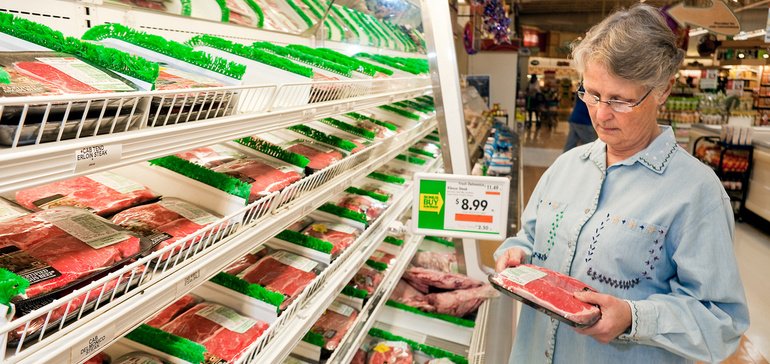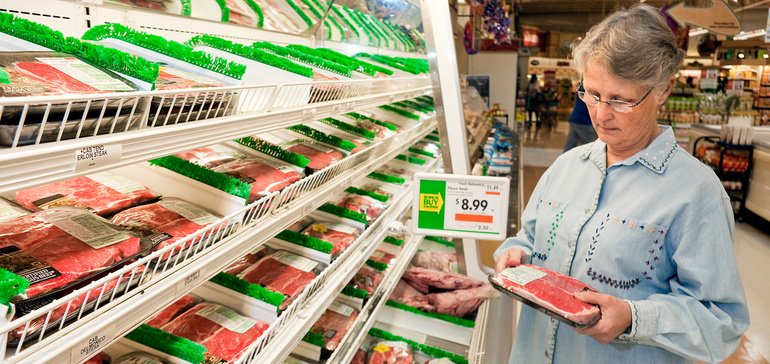
Dive Brief:
- Convenience-focused meat and poultry products across all departments posted robust growth last year, according to a new report from the Food Marketing Institute and the North American Meat Institute. The “Power of Meat 2019” report found value-added items jumped 5.1%, fully cooked ones were up 2.5% and frozen products increased 2.2%.
- Production claims on meat and poultry products — such as grass-fed and hormone- and antibiotic-free — pushed sales up 4.8.%, the report found. More than half of shoppers want more of these items in stores — 54% would like more grass-fed items, 52% want more all-natural ones and 52% would like more products free from antibiotics and hormones.
- The report also found promotional research and purchase decision-making have shifted from the home to the store. While print ads have been the top resource for accessing meat and poultry promotions for the past 13 years, in-store promotional signs have now surpassed print ads. Digital, social and mobile have also become important promotional platforms, the report noted.
Dive Insight:
Meat and poultry are continuing to grow as categories, though consumers are becoming more aware of sustainability issues and alternative protein options. One reason could be consumers are focusing more on convenience-centered items, meaning they shop both at the meat case and counter as well as the frozen aisle and deli. These trends could mean new production and marketing opportunities for manufacturers and retailers looking to position products in different locations and take advantage of cross-promotion opportunities.
While 85% of consumers say they’re meat eaters, retailers and producers also face increasing numbers of shoppers who are “flexitarian” — eating a mainly vegetarian diet but with some animal protein on occasion — vegetarian or vegan. According to the report, more young shoppers tend to identify themselves as vegetarians or flexitarians. According to HealthFocus data, 17% of U.S. consumers eat a predominately plant-based diet and 60% say they are reducing consumption of meat-based products.
The report also noted shifting trends in how consumers prepare meat-centered meals. Three-quarters rely on familiar recipes, while younger consumers turn to friends and family, social media and recipe sites for inspiration. The latter are prone to buying smaller amounts of meat and poultry, shopping online, and buying value-added meat, blended items and plant-based alternatives. Being aware of these habits could help the industry develop products in response to them, and give retailers opportunity to call attention to them across the store.
The standard meat case typically offers mainly fresh meat, poultry and pork, but they’re increasingly populated with some plant-based alternatives, such as the Beyond Burger. Since the report said the meat case is the most common destination for 79% of shoppers, it would seem to be a prime spot for retailers to call attention to trendy protein alternatives, as well as interesting value-added and cooked meat items that might appeal to flexitarians and other adventurous consumers.
Statistics indicate manufacturers and retailers have plenty to gain by responding to shifting protein habits. In 2016, total plant-based meat sales topped $606 million. From June 2017 to June 2018, retail sales of plant-based foods jumped up 20% to $3.3 billion, according to Nielsen data reported by Food Navigator. Still, that’s just a fraction of total U.S. retail meat and poultry sales, which Packaged Facts has projected will hit about $98 billion by 2021.
Given the growing numbers of shoppers who want to see production claims on retail meat and poultry products, the meat case would be another place to focus on those concerns. It could help attract a wider array of consumers who want to mix it up when it comes to traditional and plant-based proteins — and show that retailers are staying on top of the latest trends.

